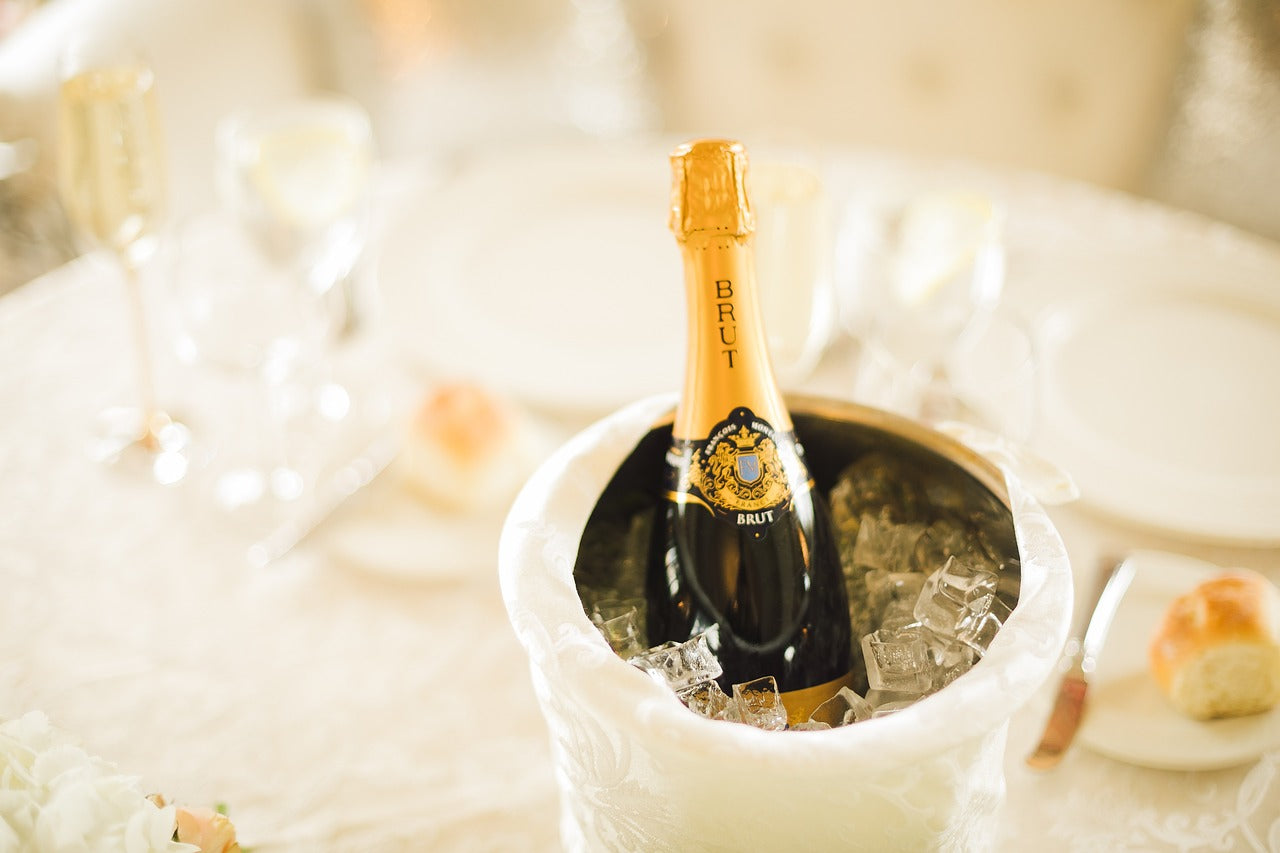Painting a champagne bottle is a fantastic way to turn an ordinary item into a unique and eye-catching masterpiece. Whether for home decor, personalized gifts, or festive occasions, customizing a bottle allows for creativity and self-expression. This DIY activity is fun, engaging, and suitable for all skill levels. It also serves as a great way to upcycle empty bottles into beautiful keepsakes.
From wedding centerpieces to holiday decorations and milestone celebrations, hand-painted champagne bottles can add a personal touch to any event. With the right materials, techniques, and creativity, anyone can transform a plain bottle into a stunning work of art.
Materials Needed
Before starting, gather the necessary supplies to ensure a smooth painting process. Here’s a list of essential materials:
Champagne Bottle Selection
-
A clean, empty champagne bottle (or a full bottle for gifting)
-
Smooth glass surface preferred for better paint adherence
-
Consider a clear or dark-colored bottle based on the desired effect
Paints, Brushes, and Additional Supplies
-
Acrylic Paints: Ideal for glass surfaces due to their quick-drying nature and vibrant colors
-
Glass Paints: Designed specifically for glass surfaces, offering durability and a glossy finish
-
Paintbrushes: Various sizes for base coats, detailing, and fine lines
-
Sponge Brushes: Perfect for blending and soft color transitions
-
Painter’s Tape: Helps create crisp edges and clean lines
-
Primer (Gesso or Glass-Specific Primer): Improves paint adhesion
-
Sealant (Clear Acrylic Spray or Mod Podge): Protects the artwork and ensures longevity
-
Decorative Elements: Glitter, rhinestones, stencils, and decals for added creativity
-
Cleaning Supplies: Rubbing alcohol, microfiber cloth, and warm water for surface preparation
Preparing the Bottle
Proper preparation ensures that the paint adheres well and the final design looks polished. Follow these steps:
Cleaning and Removing Labels
-
Soak the champagne bottle in warm, soapy water for 30 minutes.
-
Use a scraper or sponge to remove the label gently.
-
Wipe off any remaining adhesive with rubbing alcohol or nail polish remover.
-
Dry the bottle completely using a lint-free cloth.
Applying Painter’s Tape for Clean Edges
-
Cover areas you don’t want to paint, such as the neck or label.
-
Use tape to create geometric patterns or sections for different colors.
-
Ensure the tape is firmly pressed to prevent paint from seeping under.
Priming for Better Paint Adhesion
Glass is a non-porous surface, making primer crucial for long-lasting results.
Why Primer is Essential
-
Enhances paint adhesion
-
Provides a smooth base for vibrant colors
-
Prevents paint from chipping or peeling
How to Apply Primer Evenly
-
Use a sponge brush or spray primer in even layers.
-
Allow each coat to dry completely before adding another.
-
Lightly sand the surface with fine-grit sandpaper for extra grip (optional).
Designing Your Artwork
A well-planned design ensures a cohesive and professional-looking painted bottle.
Planning the Design
-
Sketch ideas on paper before painting.
-
Consider the occasion—weddings, birthdays, anniversaries, or festive themes.
-
Select colors that complement the event or decor.
Sketching or Using Stencils
-
Use a pencil or chalk marker to outline the design on the bottle.
-
Utilize stencils for precise shapes and patterns.
-
Tape stencils in place to prevent movement while painting.
Painting Techniques
Various techniques can be used to achieve different effects on a champagne bottle.
Applying a Base Coat
-
Use a flat brush or sponge for even coverage.
-
Apply multiple thin coats instead of one thick coat.
-
Let each layer dry before adding another to prevent streaks.
Adding Details with Fine Brushes
-
Use fine-tipped brushes for intricate designs and lettering.
-
Layer colors for a rich, dimensional look.
-
Blend shades for gradients and soft transitions.
Using Mixed Media (Glitter, Rhinestones, Decals)
-
Apply glitter to wet paint for a sparkly effect.
-
Use rhinestones for added texture and luxury.
-
Seal decals with Mod Podge to ensure they adhere properly.
Sealing and Protecting Your Artwork
A good sealant keeps the artwork intact and prevents chipping or fading.
Choosing the Right Sealant
-
Glossy Acrylic Spray: Provides a shiny, professional finish.
-
Matte Finish Spray: Gives a subtle, elegant effect.
-
Mod Podge: Works well for sealing glitter and decorative elements.
How to Apply for a Lasting Finish
-
Spray or brush on sealant in light, even coats.
-
Allow it to dry completely between layers.
-
Avoid handling the bottle until the sealant fully cures.
Final Touches & Presentation
Adding small finishing touches can elevate the overall aesthetic of the painted bottle.
Removing Tape Cleanly
-
Carefully peel off the tape before the paint fully dries to avoid rough edges.
-
Use a precision knife if needed to create crisp lines.
Adding Decorative Ribbons or Gift Tags
-
Tie a satin ribbon around the neck for an elegant look.
-
Attach a personalized tag with the recipient’s name or occasion details.
Creative Ideas & Inspiration
Here are some design inspirations to spark creativity:
Themed Designs
-
Wedding bottles with gold or silver accents
-
Holiday-themed designs (Christmas, New Year’s Eve, Valentine’s Day)
-
Birthday or anniversary motifs with personalized messages
Monograms and Hand-Lettering
-
Use calligraphy pens for sophisticated script designs.
-
Monogram initials for a timeless, classic touch.
Abstract and Geometric Patterns
-
Create ombre effects using sponge blending techniques.
-
Use masking tape for sharp, geometric lines.
(Source: @designedby.fer)
Painting a champagne bottle is a rewarding and enjoyable craft. Whether creating a gift, commemorating a special event, or simply having fun with DIY art, the possibilities are endless. With high-quality paints and sealants, such as those from Angelus Direct, achieving professional-grade results is effortless. So grab a bottle, unleash your creativity, and start painting today!
FAQs
What type of paint works best on glass bottles?
Acrylic paints and glass paints work best. For superior durability, consider using Angelus Direct glass paints, designed for long-lasting adhesion and vibrant colors.
How do I prevent paint from chipping?
Applying a primer, using thin layers of paint, and sealing the final artwork with a clear protective spray ensures long-lasting results.
Can I use spray paint instead of acrylic?
Yes, spray paint provides a smooth, even coat. However, ensure it is suitable for glass surfaces and follow up with a sealant.
Do I need a primer if using glass-specific paint?
Not always, but using a primer improves adhesion and enhances color vibrancy.
How long does the paint need to dry before sealing?
Acrylic paint should dry for at least 24 hours before applying a sealant for best results.
Can I wash the bottle after painting it?
Hand washing with mild soap is recommended. Avoid soaking or scrubbing to prevent damage to the artwork.

